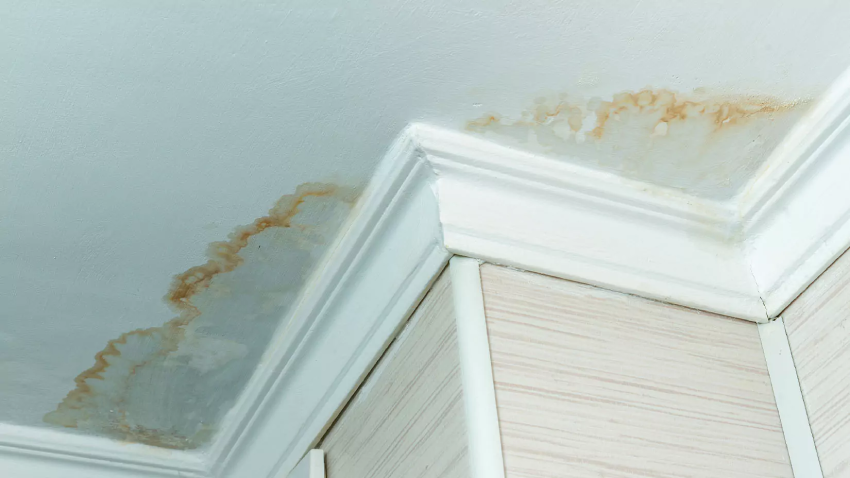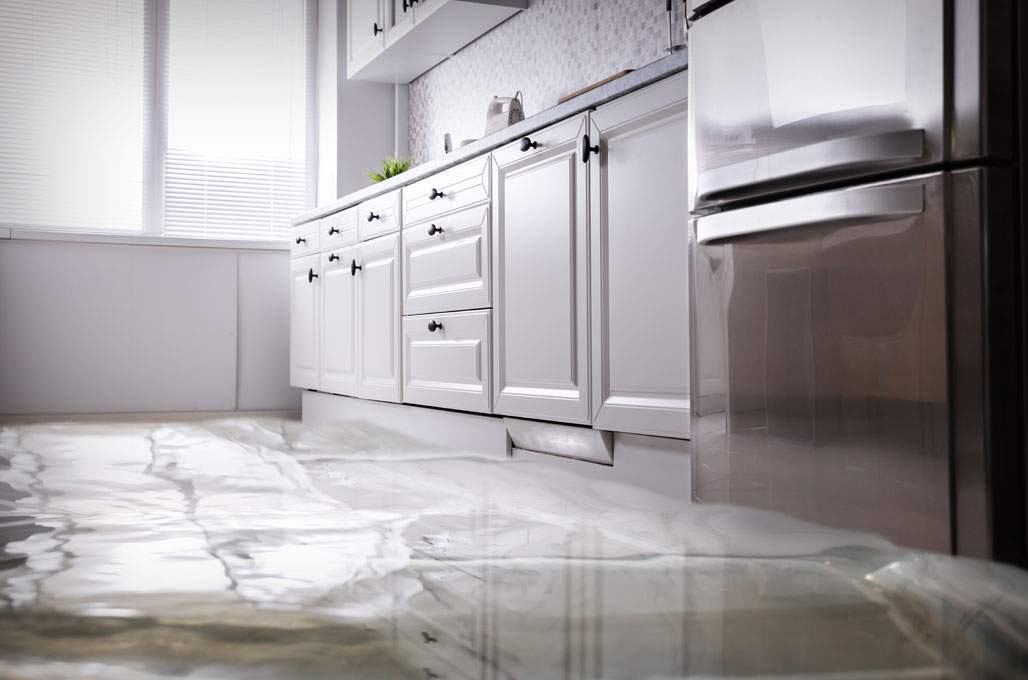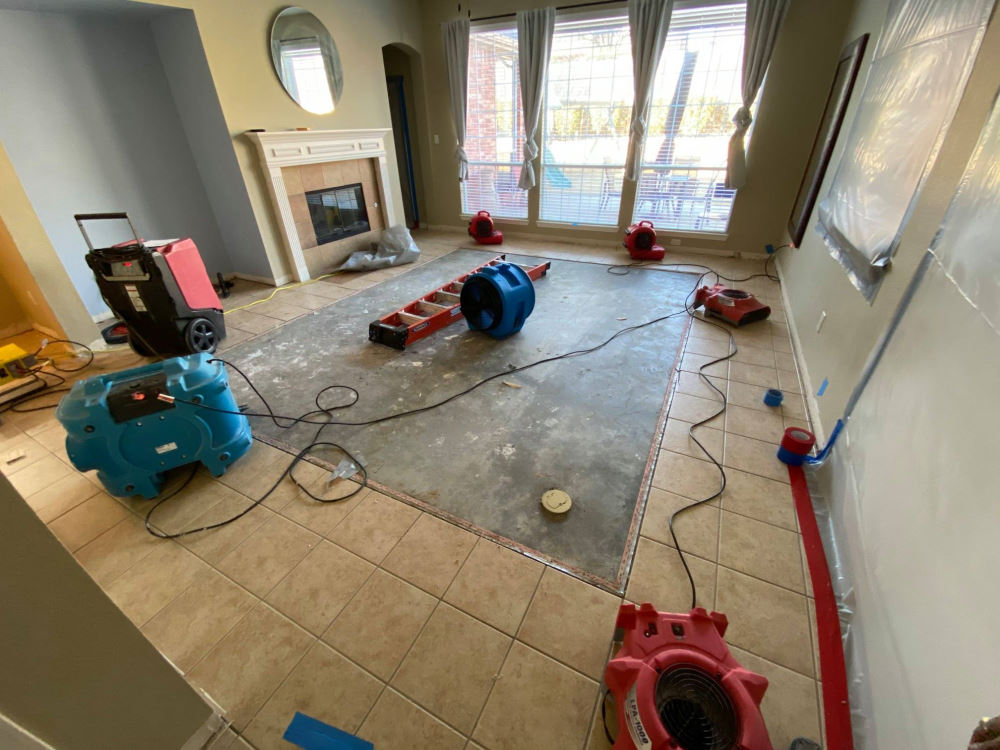Quick Response Emergency Water Leak Repair for Residential and Commercial Needs
Quick Response Emergency Water Leak Repair for Residential and Commercial Needs
Blog Article
The Refine of Water Damages Cleanup: Ensuring Your Home Is Brought Back Efficiently
Water damages can be a complicated obstacle for home owners, demanding a structured and careful cleanup procedure to restore safety and performance. Originally, a thorough analysis is important to identify the extent of the damage and establish the ideal remediation measures. Following this, efficient water removal strategies play an essential function in alleviating more damage. Nevertheless, the nuances of drying out, sanitizing, and ultimate remediation are just as necessary and often neglected. Understanding these stages can make a significant difference in the end result of your home's reconstruction, motivating a closer look at what each step entails.
Examining the Damages
Upon finding water damages, the initial step is to completely assess the level of the effect. This first assessment is important, as it assists determine the needed actions for reliable cleaning and restoration. Begin by examining the impacted locations, including walls, ceilings, floors, and individual possessions, to identify the source of the water invasion, whether from flooding, leaks, or condensation.
Recording the damage is important for both insurance coverage claims and intending repair initiatives - damage restoration services. Usage photographs and created notes to catch the seriousness of the damages, keeping in mind any type of affected structural elements and materials. Pay unique focus to areas that might not be immediately visible, such as behind walls and under carpets, as hidden wetness can bring about further difficulties, including mold and mildew growth
Furthermore, analyze the timeline of the water direct exposure. The longer the products stay damp, the better the potential for damages. Comprehending the duration of exposure will certainly educate the necessity of remediation initiatives. Inevitably, a thorough analysis lays the foundation for a successful water damages cleanup process, making sure that all impacted locations are dealt with successfully and completely.
Water Removal Methods

Professionals normally use completely submersible pumps for bigger volumes of water, which can swiftly alleviate flooding in basements or various other influenced areas. For smaller quantities, wet/dry vacuum cleaners are commonly made use of to draw out recurring moisture from rugs and difficult surfaces. Furthermore, making use of mobile extractors enables for targeted elimination in confined areas or locations with fragile products.
In circumstances of infected water, such as sewage or floodwater, progressed removal strategies might entail the usage of biohazard devices to guarantee security and conformity with health laws. High-powered extraction devices are important in lessening water retention in architectural materials, which can lead to mold and mildew growth and structural damage if not addressed immediately.
Ultimately, the effectiveness of water extraction strategies plays a crucial role in the general success of the water damages clean-up procedure, laying the foundation for subsequent reconstruction initiatives.
Drying and Dehumidification
As soon as standing water has actually been efficiently drawn out, the next crucial phase in the water damage cleaning process is drying out and dehumidification. This action is essential to prevent further damages and mold development, which can happen within 24 to two days in damp atmospheres.
To achieve efficient drying out, specific equipment such as industrial-grade air moving companies and dehumidifiers is employed. Air movers flow air across damp surface areas, boosting dissipation prices, while dehumidifiers reduce moisture degrees link airborne, advertising a helpful atmosphere for drying out. The mix of these tools guarantees that moisture is extracted from furnishings, wall surfaces, and floors, enabling them to completely dry extensively.
It is necessary to keep track of the drying out procedure closely. Specialists typically make use of moisture meters to evaluate the dampness web content in numerous materials, ensuring that all affected areas get to appropriate dryness levels. This careful strategy aids to avoid concealed dampness pockets that can lead to structural damage or undesirable mold and mildew development.

Cleansing and Sanitizing
After the drying and dehumidification stage is total, the following crucial action in water damages cleaning is cleansing and sterilizing the influenced locations. This process is vital to stop the development of mold and mildew, microorganisms, and various other microorganisms that prosper in moist atmospheres.
The cleaning phase generally involves removing any debris, dust, and impurities from surfaces using specialized cleaning up representatives. For tough surface areas, a combination of soap and water or commercial cleansing items is commonly utilized. Soft materials, such as furniture and rugs, may require extra extensive cleansing techniques, including steam cleansing or deep removal techniques, to ensure comprehensive cleanliness.

Sterilizing follows cleaning, utilizing EPA-approved anti-bacterials to remove dangerous bacteria. This action is necessary, particularly in locations that may have entered into contact with floodwaters or sewer, as these sources can posture major wellness dangers.
In addition, it is essential to deal with any kind of remaining smells, which might need the usage of odor neutralizers or sophisticated strategies like ozone treatment. Appropriate cleaning and sterilizing not just restore the security and hygiene of your home however additionally prepared for effective restoration and repair services in succeeding stages of the water damages clean-up procedure.
Restoration and Repair Services

As soon as the evaluation is total, remediation efforts can start. Furthermore, flooring may call for comparable interest, depending on the level of water exposure.
It is crucial to involve experienced reconstruction specialists throughout this process, as they possess the proficiency to handle intricate repair work effectively. They can help reduce prospective future issues, such as mold and mildew growth or architectural instability, therefore making certain a risk-free and habitable living setting. Ultimately, effective reconstruction and repair work recover the home's honesty and boost its general worth.
Conclusion
In conclusion, the process of water damages clean-up is crucial for recovering a home to its pre-damage problem. Each phase, from assessing the damage to carrying out efficient water extraction methods, followed by thorough drying out, sanitizing, and necessary fixings, plays an essential duty in making certain security and compliance with structure standards. Efficient execution of these steps not just alleviates instant damages yet also improves the long-lasting integrity and value of the property.
Water damages can be a challenging difficulty for homeowners, necessitating a precise and structured cleaning procedure to bring back safety and performance. Eventually, a thorough assessment lays the foundation for an effective water damages clean-up procedure, guaranteeing that all impacted areas are addressed effectively and thoroughly.
Efficient water extraction methods are important in alleviating damages and protecting against additional complications adhering to a water invasion event.In final thought, the process of water damage clean-up is important for restoring a home to its pre-damage problem. Each stage, from examining the damage to executing effective water removal techniques, adhered to by complete drying, disinfecting, and required repairs, plays a crucial function in ensuring security and conformity with building criteria.
Report this page